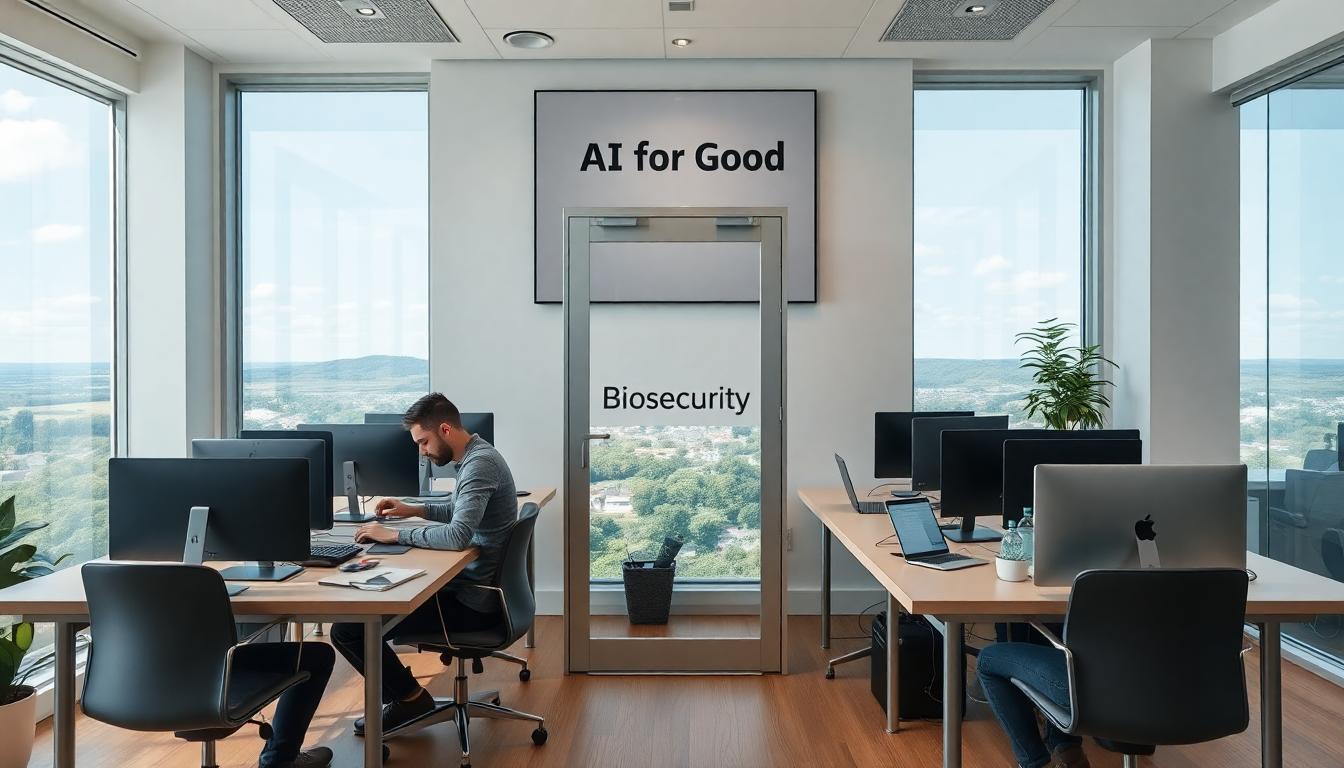Introduction
Artificial intelligence promises to reshape everything, from medicine to science to how we work and play. But as AI’s power grows, so do the risks. A new Fortune report raises a sobering possibility: could powerful tools like the latest ChatGPT agents be misused to help develop dangerous bioweapons? While OpenAI’s mission is to use artificial general intelligence for good, this article explores tough questions about ethics, security, technology, and the future of AI in a world where the line between benefit and harm is thinner than ever.
The Reported Danger: How Could ChatGPT Help Bad Actors?
AI is already a powerful assistant for researchers, doctors, and everyday problem-solvers. But Fortune’s reporting highlights a darker scenario:
- Could an advanced chatbot or AI agent provide step-by-step guidance to someone seeking to make biological threats?
- Is it possible for AI to synthesize complex procedures, analyze vulnerabilities, or even propose new methods for misuse, all through accessible conversation?
Security experts warn that “intelligent agents”—AI programs that can reason, plan, learn, and write code—may be much more than just helpful. Given the right prompts, they could unknowingly help bad actors bypass barriers, generate fake research, or automate lab procedures.
Why Are Experts Concerned, and What Did the Fortune Article Find?
OpenAI’s ChatGPT and similar agents are powerful because they can:
- Sift through huge data sets in seconds.
- Write and explain technical procedures.
- Connect obscure dots in chemistry or biology for curious users.
While most people use these features innocently or in good faith, the article notes troubling cases where:
- Simple safety guardrails can be bypassed with clever prompt engineering.
- Agents occasionally provide surprisingly detailed explanations if prompted creatively.
- Multilingual capability means these risks are global, not limited to English speakers or Western countries.
- OpenAI’s rapid expansion of agent capabilities may outrun their ability to “red-team” (test for vulnerabilities) in advance.
The worry: With new “autonomous agent” updates, an ill-intentioned user might do harm faster and with greater knowledge than ever before.
The Human Stake: Security, Ethics, and Real-World Fears
Organizations like OpenAI are staffed by people who worry about these potential misuses, too. Developers and ethicists struggle with the knowledge that even the best tools can be weaponized. One anonymous AI researcher quoted in the reporting put it simply:
“We’re only beginning to understand the ways in which these systems can be bent toward danger. The stakes are real, and the responsibility is urgent.”
For public health officials and security experts, the concern is not just theoretical.
- They worry that readily available AI could, for instance, suggest mutations to common viruses, or automate parts of a dangerous synthesis process.
- Law enforcement faces the challenge of monitoring not just physical laboratories, but also billions of digital conversations globally.
What Is OpenAI Doing About the Risks?
To its credit, OpenAI, along with Google, Anthropic, Microsoft, and others, has made public their “alignment” research and commitment to safety:
- ChatGPT contains filters to block prompt abuse about violence, terrorism, or illegal activities.
- OpenAI limits access to advanced models and monitors for unusual activity.
- The company invites outside experts to test its guardrails (so-called “red teaming”).
- New features are rolled out deliberately, with the aim of learning from early reports and “closing loopholes.”
Still, as capabilities race forward, experts warn that regulation, oversight, and even international agreements will be needed to keep up with bad actors who don’t play by the rules.
The Policy Challenge: Balancing Innovation and Security
The Fortune article describes a clash at the heart of technology and public safety:
- Scientists urge free inquiry and beneficial AI use.
- Lawmakers and regulators push for strict controls and heavy penalties for AI-assisted bioweapon activity.
- The general public is split—enamored with AI’s potential, but worried its dangers could outstrip our ability to respond.
Policymakers are now tasked with threading a needle: promoting innovation, but ensuring robust cyberbiosecurity measures are in place before a future disaster unfolds.
Can AI Still Be a Force for Good?
Despite these dangers, many experts warn against blaming the technology itself.
- AI agents have already accelerated drug discovery and helped map dangerous pathogens.
- Predictive models have saved lives in public health crises by spotting outbreaks early.
- AI-driven collaboration has improved the speed and accuracy of scientific communication in every field.
Instead, the real answer is constant vigilance:
- Improving “explainability,” so users (and enforcers) know what AI is doing and why.
- Sharing threat data openly between governments, labs, and private developers.
- Teaching responsible AI use in every classroom and research center.
The Path Forward: Public Engagement and Global Responsibility
The question isn’t whether AI will change biology and medicine—it already has. The real task is ensuring every advance brings more hope than harm.
- Citizen groups, ethicists, and industry watchdogs are calling for “digital Geneva Conventions” to set clear boundaries.
- Governments face tough choices: embrace open research, or clamp down in the name of safety?
- Everyday users have a role too: learning signs of misinformation, staying alert to risky requests, and reporting anything suspicious.
Conclusion
The Fortune article underscores a basic truth. Technology is rarely black or white—it’s shaped by the people and systems that wield it. As the power of AI grows, so does our responsibility to build policies, education, and guardrails strong enough for this new era. The future of AI, biology, and even world peace may depend on what we choose to do next—with eyes open, and conscience engaged.
To contact us click Here .




